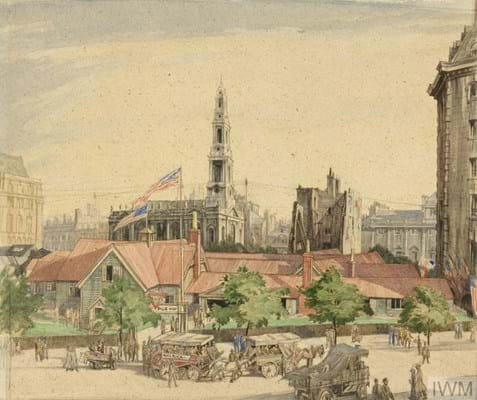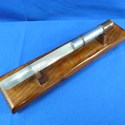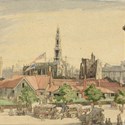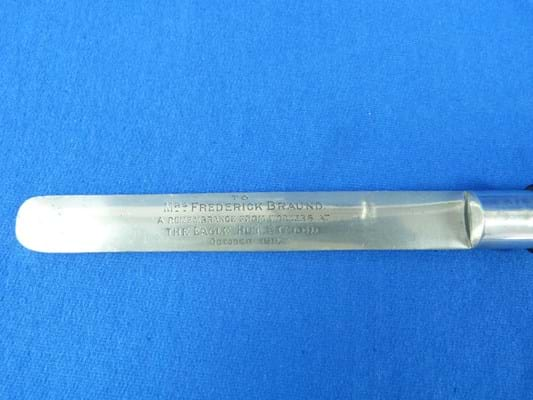It is a typical example of ‘trench art’, a term used to describe objects made from the debris and by-products of modern warfare which is usually associated with the First World War.
The debris used for this 10in (25.5cm) long knife is revealed by the inscription on one side of the blade: Part of Zeppelin L.15 brought down in Thames Estuary night of 31st March 1916.
Interesting in itself, but the inscription on the other side is: To Mrs Frederick Braund. A remembrance from workers at The Eagle Hut, Strand, October 1918.
Relaxing spot
The Eagle Hut was a haven of peace in the First World War – the Young Men’s Christian Association YMCA in the Strand, London, which provided British and then increasingly American servicemen away from home in the UK with a place to eat, drink, relax and write letters home.
It served around 2m meals between August 1917 and August 1919.
According to website greatwarlondon.wordpress.com, “operating from mid-August 1917, the YMCA’s Eagle Hut was officially opened on September 3 by US ambassador WH Page”.
The hut was established by four American businessmen based in London: EC Carter, Robert Grant, Grant Forbes and Francis E Powell. It stood at the point where the Indian High Commission and some of Bush House now stand, slightly west of the bottom of Kingsway on the north side of Aldwych.
The website adds: “It was said to serve 3000 per day, 4-5000 on busy days. American pancakes were the most popular items offered, with 1000 sold every day, as well as 13-15,000 ice creams per week during the summer.
“The hut was run by 800 volunteers – most of them women – and included 410 beds for servicemen staying overnight. It also had a billiard room, and other games were played.”
“As well as sports, food, and accomodation, the hut also provided information for the troops. The YMCA also organised theatre trips and sight-seeing trips for them, to places like Kew, Windsor, St Paul’s, the Tower of London and the Old Cheshire Cheese pub.”
When the hut finally closed a dance was held to mark the occasion. A decade later, the then US ambassador, AB Houghton, unveiled a plaque to be placed in the wall of the buildings on the site of the Eagle Hut, “paid for by the ‘Eagle Hutters’, a group of American businessmen who had volunteered at the hut during the war”.
Militaria collector
As for the Chilcotts knife, is not known who Mrs Braund is as yet. Auctioneer Liz Chilcott thinks she was “presumably a volunteer at the hut, or maybe part of the organisation”.
The knife is part of a militaria collection amassed by a former policeman. Chilcott adds: “The collection is being consigned by the collector himself – his collection has got out of hand, and his wife would like to be able to hang pictures on their house walls, rather than guns! His collecting interests seem very wide.”













